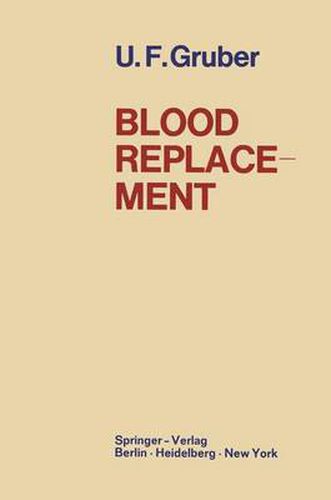Readings Newsletter
Become a Readings Member to make your shopping experience even easier.
Sign in or sign up for free!
You’re not far away from qualifying for FREE standard shipping within Australia
You’ve qualified for FREE standard shipping within Australia
The cart is loading…






This title is printed to order. This book may have been self-published. If so, we cannot guarantee the quality of the content. In the main most books will have gone through the editing process however some may not. We therefore suggest that you be aware of this before ordering this book. If in doubt check either the author or publisher’s details as we are unable to accept any returns unless they are faulty. Please contact us if you have any questions.
The manifold problems of shock are still of great importance, diagnostic and therapeutic experience of the severely ill being supplied with new information almost every month. In the 5 periodicals which have found their way to my desk during the past few days there are no less than 10 interesting articles on questions concerning shock research [see Bibliography 41 b, 53 a, 60 a, 192 a, 242 a, 350 b, 810 a, 941 a, 1069 a, 1082 a]. The most urgent point still is to maintain as complete as possible the objective catalog of the various shock manifestations found in man and in animals - yet at the same time to view interpretations of these phenomena in their relative and temporal truth . Problems of shock research are not only interesting for their scientific value but also for their clinical implication. In particular, almost every practicing physician is facing problems of blood replacement very frequent ly. The effective or circulating blood volume remains an important theoret ical and therapeutic problem in the shock field. For years, U. F. GRUBER has pursued this question clinically and experimentally. This volume deals with the world literature in an exceptionally thorough manner. This book is made more than a compilation by including a long list of original work done with F. D. MOORE in Boston, in the Surgical Department in Chur, with L. E. GELIN and S. E.
$9.00 standard shipping within Australia
FREE standard shipping within Australia for orders over $100.00
Express & International shipping calculated at checkout
This title is printed to order. This book may have been self-published. If so, we cannot guarantee the quality of the content. In the main most books will have gone through the editing process however some may not. We therefore suggest that you be aware of this before ordering this book. If in doubt check either the author or publisher’s details as we are unable to accept any returns unless they are faulty. Please contact us if you have any questions.
The manifold problems of shock are still of great importance, diagnostic and therapeutic experience of the severely ill being supplied with new information almost every month. In the 5 periodicals which have found their way to my desk during the past few days there are no less than 10 interesting articles on questions concerning shock research [see Bibliography 41 b, 53 a, 60 a, 192 a, 242 a, 350 b, 810 a, 941 a, 1069 a, 1082 a]. The most urgent point still is to maintain as complete as possible the objective catalog of the various shock manifestations found in man and in animals - yet at the same time to view interpretations of these phenomena in their relative and temporal truth . Problems of shock research are not only interesting for their scientific value but also for their clinical implication. In particular, almost every practicing physician is facing problems of blood replacement very frequent ly. The effective or circulating blood volume remains an important theoret ical and therapeutic problem in the shock field. For years, U. F. GRUBER has pursued this question clinically and experimentally. This volume deals with the world literature in an exceptionally thorough manner. This book is made more than a compilation by including a long list of original work done with F. D. MOORE in Boston, in the Surgical Department in Chur, with L. E. GELIN and S. E.